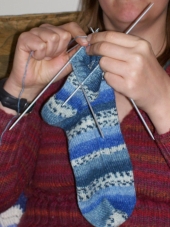

 9
9





How Permies works: https://permies.com/wiki/34193/permies-works-links-threads
My projects on Skye: The tree field, Growing and landracing, perennial polycultures, "Don't dream it - be it! "




Zone 9b
 9
9











 6
6




"The only thing...more expensive than education is ignorance."~Ben Franklin. "We can easily forgive a child who is afraid of the dark; the real tragedy of life is when men are afraid of the light." ~ Plato
 11
11




In the south when the wind gets to 75 mph they give it a name and call it a hurricane. Here we call it a mite windy...












 7
7




The true down breeds are called “Down” because they originated in southeastern England and not because they have a downy undercoat. Most times the British Hill Breeds are also included in the down category because of fleece similarities.
How Permies works: https://permies.com/wiki/34193/permies-works-links-threads
My projects on Skye: The tree field, Growing and landracing, perennial polycultures, "Don't dream it - be it! "
 6
6




In the south when the wind gets to 75 mph they give it a name and call it a hurricane. Here we call it a mite windy...












 4
4




Dorothy Pohorelow wrote: This site talks about Cheviot for socks so that could be a good choice to replace the down wool we are talking about. https://petramarciniak.com/2019/01/22/all-about-sockyarn-spinning/
My interest is mostly to spin a yarn that’ll produce
durable everyday socks I can wear over years in my shoes,
that won’t felt after the first washing
that won’t have holes after a month and
that are nevertheless comfortable.
How Permies works: https://permies.com/wiki/34193/permies-works-links-threads
My projects on Skye: The tree field, Growing and landracing, perennial polycultures, "Don't dream it - be it! "
 5
5




Dorothy Pohorelow wrote:There is also Southdown, Olde English Southdown and Babydoll Southdown are small breeds with similar fleeces but are not the same as a Southdown which is a full size sheep. Hampshire are also down sheep.
This site talks about Cheviot for socks so that could be a good choice to replace the down wool we are talking about. https://petramarciniak.com/2019/01/22/all-about-sockyarn-spinning/
"The only thing...more expensive than education is ignorance."~Ben Franklin. "We can easily forgive a child who is afraid of the dark; the real tragedy of life is when men are afraid of the light." ~ Plato
 7
7




Freedom!
 7
7












 5
5




Freedom!

 7
7




 6
6




He whai take kore noa anō te kupu mēnā mā nga mahi a te tangata ia e kōrero / His words are nothing if his works say otherwise

| I agree. Here's the link: http://stoves2.com |






